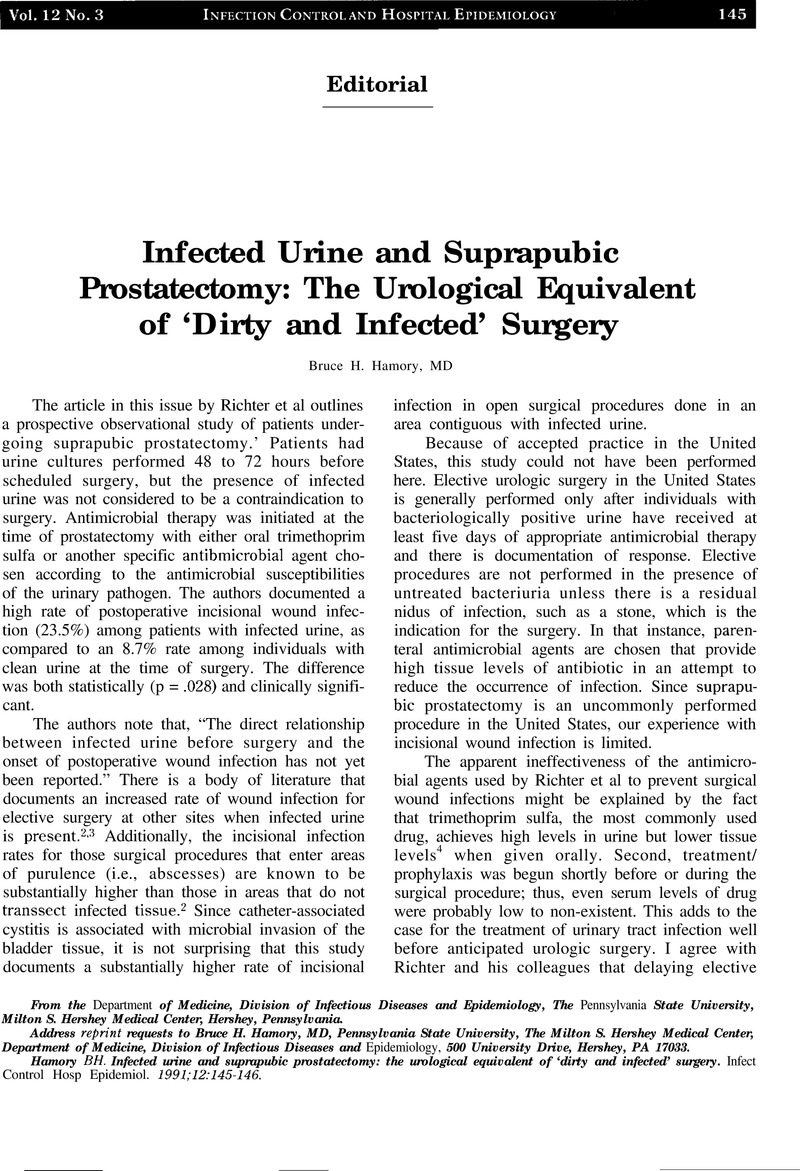No CrossRef data available.
Article contents
Infected Urine and Suprapubic Prostatectomy: The Urological Equivalent of ‘Dirty and Infected’ Surgery
Published online by Cambridge University Press: 21 June 2016
Abstract
An abstract is not available for this content so a preview has been provided. As you have access to this content, a full PDF is available via the ‘Save PDF’ action button.

- Type
- Editorial
- Information
- Copyright
- Copyright © The Society for Healthcare Epidemiology of America 1991
References
1.
Richter, S, Lang, R, Zir, F, Nissenkorn, I. Infected urine as a risk factor for postprostatectomy wound infection. Infect Control Hosp Epidemiol. 1991;12:147–149.CrossRefGoogle ScholarPubMed
2.
National Academy of Sciences; National Research Council. Post-operative wound infection: the influence of ultraviolet irradiation of the operating room and of various other factors. Ann Surg. 1964;160:1–192.Google Scholar
3.
Altemeir, WA, Culberston, WR, Hummel, RI? Surgical considerations of endogenous infection-sources, types and methods of control. Surg Clin North Am. 1968;48:227–240.10.1016/S0039-6109(16)38448-1CrossRefGoogle Scholar
4.
Kucers, A, Bennett, NM. Trimethoprim, co-trimoxazole (CO-TT), and other trimethoprim combinations. In: Kucers, A, Bennett, NM, eds. The Use of Antibiotics. 4th ed. London, England: Lippincott; 1988;1118–1202.Google Scholar


